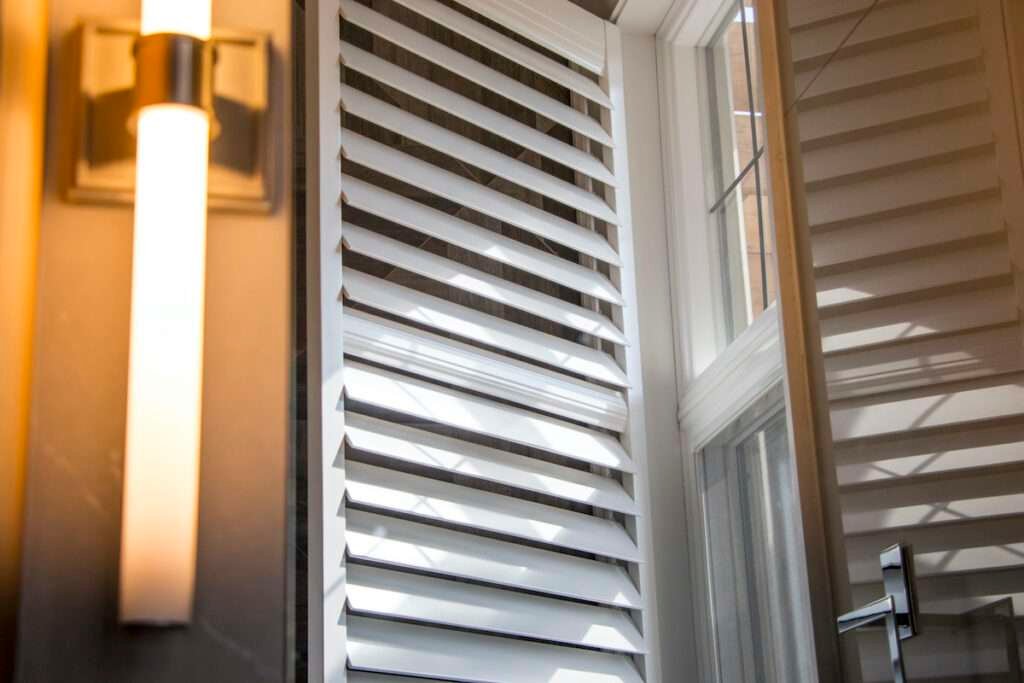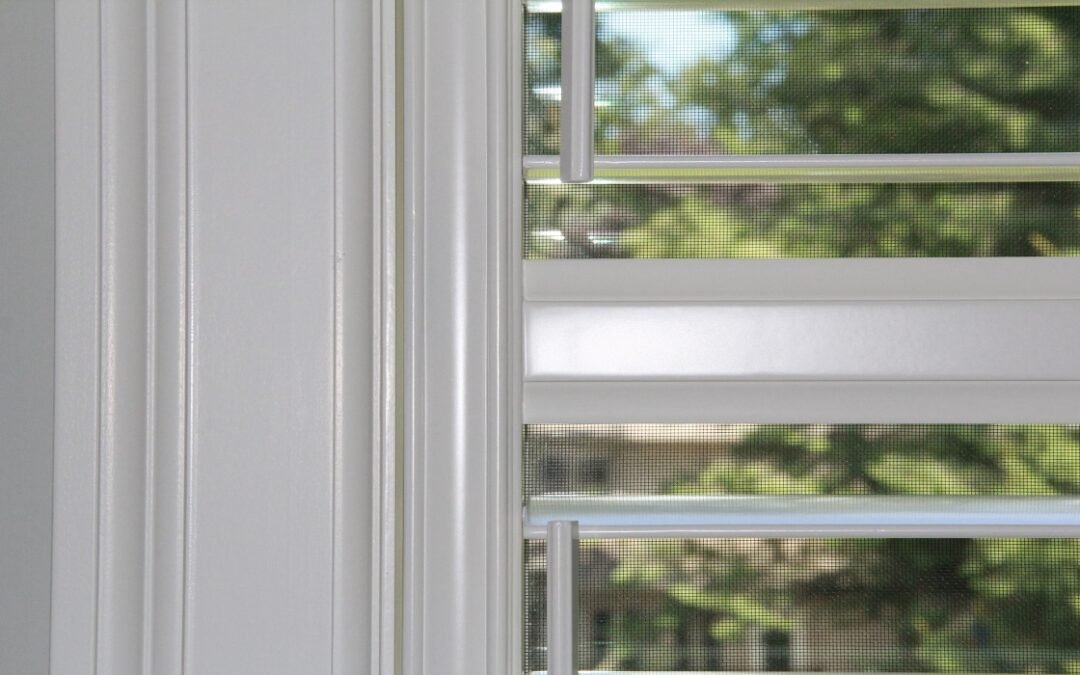Louvers refer to the individual slats or blades that rotate open and closed to control privacy and light-entry with your window shutters. While some shutters are fully solid panels, louvered shutters allow you to let light enter the room or look outside without fully swinging open the hinged shutter panel. The term “louvers” is interchangeable with “slats” when referring to these parts of a shutter.
What size are the louvres on shutters?
Older historic or colonial style shutters have very small louvers which means there are many louvers in each panel and not a lot of visibility through the slats even when they are fully open. Smaller louvers have fallen out of style and lost popularity among modern homes.
Plantation shutters have wider louvres for a more modern look, in a range of sizes. 2 ½” slats still give you the more traditional look with plenty of light able to come through when the slats are open, but still plenty of privacy as well. They are suitable for shallow windows or very short windows. 3” and 3 ½” slats are a popular middle-sized louvre that gives you clean lines and are suitable for medium to tall height windows. 4 ½” slats give you the most modern/contemporary look, the most light-entry, and the most visibility through the slats when they are open. They are great for tall windows and/or windows with a deep recess.

Do All Shutters Have Louvres?
While plantation shutters are louvred and are now the most popular window treatment, there are also full solid panel shutters. Solid raised panel or flat solid shaker shutters offer complete privacy, light blockage, and also offer the same insulation as plantation shutters and even a bit more noise reduction. Solid shutters are excellent for night shift workers or for those looking for the most room-darkening and privacy.
Louvred shutters however give you more flexibility and control over how much light and privacy you have by controlling the degree to which you rotate the louvres open or closed. You can also split the louvres into separately operable sections using a mid-rail, or a hidden tilt rod split so that the louvres move independently in upper and lower sections of the shutter.

